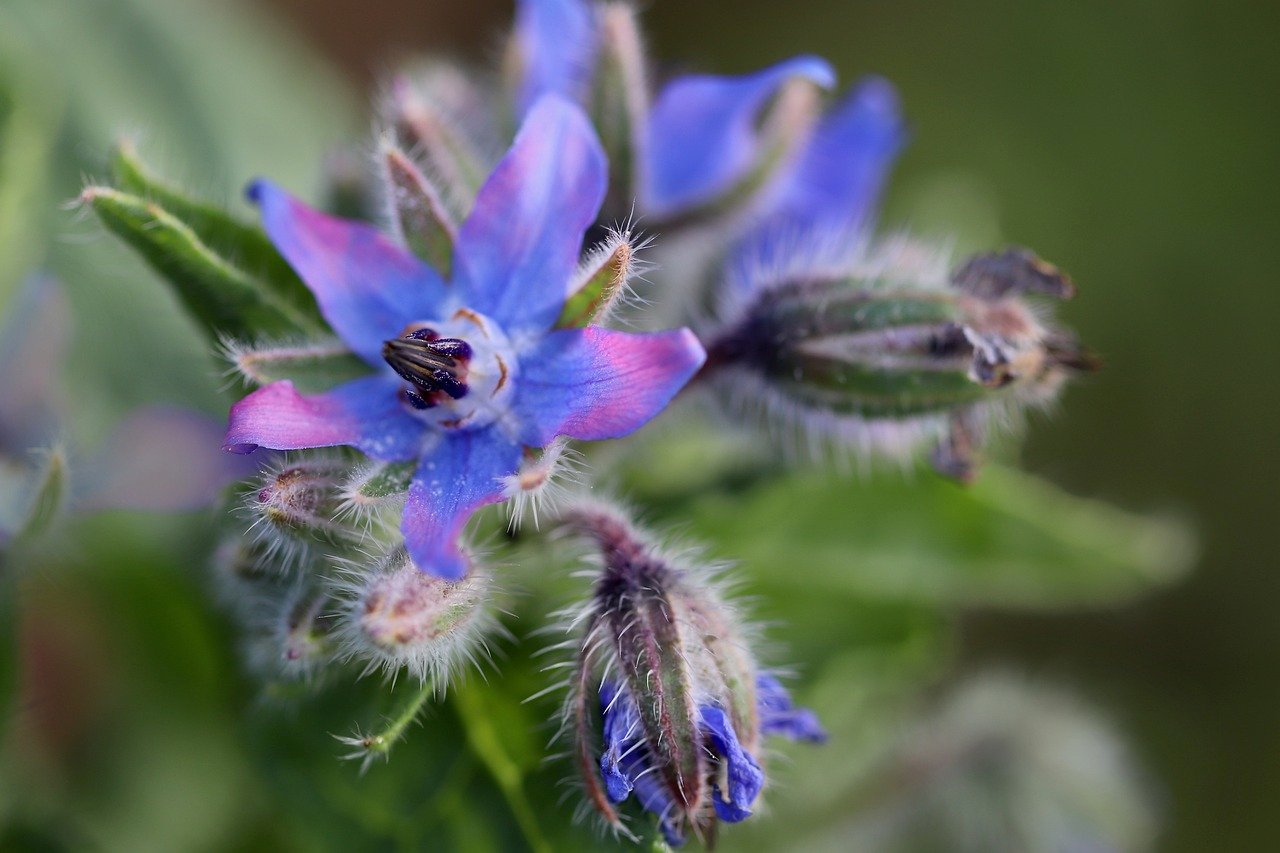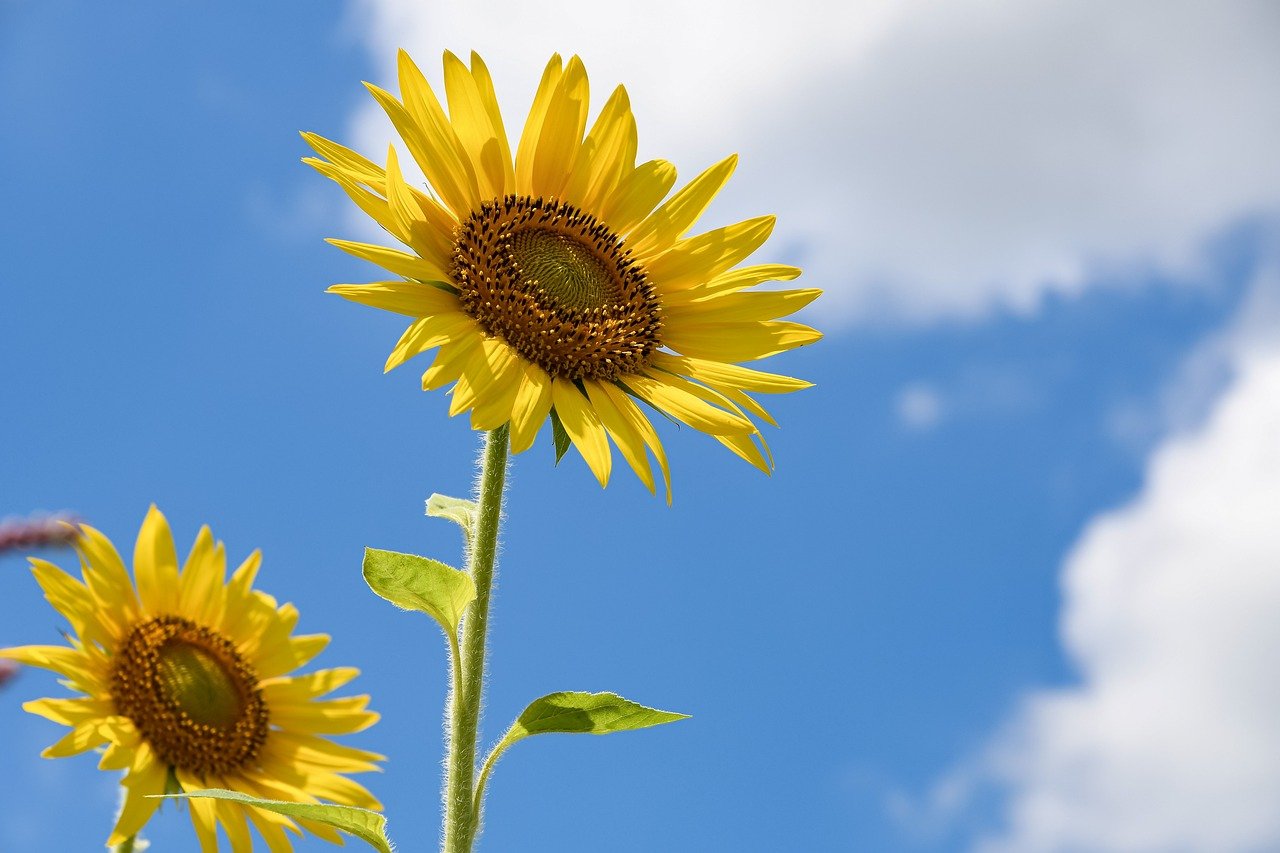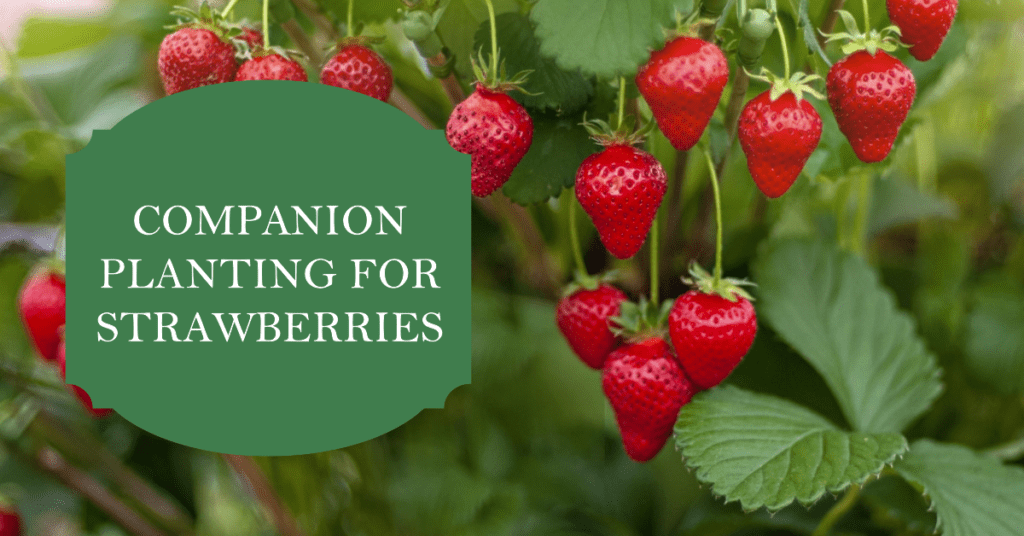Introduction to Strawberry Companion Plants
Definition and Purpose of Companion Planting
Strawberry Companion Plants can be a game-changer for gardeners who want stronger plants and larger yields of strawberries. When different types of plants are grown in close proximity to one another, they provide mutual benefits to the garden. To increase yield, discourage pests, encourage beneficial insects, improve flavor, and boost soil fertility, some plants are deliberately put in close proximity to one another. It aids in the development of the plant’s inherent resistance to the most frequent pests and illnesses that affect strawberry plants. Selecting the right companion plants will help you attract predatory insects while keeping the pests at bay. This encourages a greener farming practice by reducing the need of chemical pesticides. Strawberry plants benefit from companion planting since it improves their overall health and yield. Companions can improve flavor profiles and yields by shading plants and enhancing soil quality, respectively. You can construct a microcosm of your ideal strawberry-growing environment by mimicking the symbiotic connections between plants found in nature.Benefits of Companion Planting for Strawberries
Strawberries can reap many benefits from companion planting. To begin with, it facilitates pest management through the deployment of specific companion plants’ inherent natural repellents. The smell that marigolds give off is enough to deter pests like aphids, while nasturtiums can be used as trap crops to divert aphids away from strawberry plants and onto themselves. These ingenious measures help prevent harm to the tender strawberry leaf from pests. Attracting helpful critters like bees and ladybugs is another perk. Borage blooms are highly sought after by pollinators like bees, which are crucial to the successful growth of strawberry fruit. Dill attracts ladybugs, which prey on the aphids that would otherwise eat the leaves of your strawberry plants. Better pollination and natural pest control can be achieved by providing a safe habitat for these beneficial creatures. Also, a few companion plants enhance soil quality or serve as natural fungicides. For example, thyme can be used as a ground cover to suppress weeds while also retaining moisture in the soil and facilitating water runoff. Dill’s chemical secretions prevent the spread of disease-causing fungus in strawberry fields. These perks not only make your strawberry garden a more sustainable place to grow food, but they also improve the quality of life for your strawberry plants. Growing strawberries well and sustainably requires a commitment to the use of companion planting. Gardeners can take advantage of nature’s harmonious partnerships by carefully choosing companion plants in order to better manage pests, attract beneficial insects, improve flavor profiles, boost production potential, enhance soil quality, and decrease reliance on dangerous chemicals. The potential of your strawberry crop may be holding you back, so why not dive into the interesting world of strawberry companions? And so will your garden and taste buds!General Companion Plants for Strawberries
Marigolds: Natural Pest Repellent and Beneficial Insect Attractant
Marigolds are the unsung heroes of the garden when it comes to plants that combine well with strawberries. In addition to being visually appealing, the bright flowers of these plants function as natural pest deterrents and attract beneficial insects. Several common garden pests, including aphids and nematodes, are driven away by the strong aroma given off by marigolds. Their pungent scent will deter pests and help keep them away from your prized strawberry plants. The incredible capacity of marigolds to draw in helpful insects like ladybugs and lacewings is only one of their many attributes. These microadversaries prey on hazardous insects like aphids and spider mites. By planting marigolds around your strawberry crop, you’re arming yourself with a force that can help you fight off pests. Furthermore, the beauty of marigolds in a garden is undeniable; they are like a little ray of sunshine waiting for you outside your front door.Nasturtiums: Trap Crop for Aphids and Other Pests, Adds Beauty to the Garden
Go no farther than nasturtiums if you want a pretty companion plant that also acts as a trap crop to protect your strawberries from pests. These pretty blossoms are available in a riot of hues, and they also have the astonishing ability to lure aphids away from your prized strawberries. The nasturtiums serve as decoys, enticing pests away from your strawberries and onto themselves. The delicate foliage and sweet scent of these flowers make them a magnet for annoying insects. Strawberry plants are particularly vulnerable to harm from aphids, but nasturtiums can help deter these pests. The nasturtiums add visual appeal, while your strawberries stay out of harm’s way; it’s a win-win!
Borage: Attracts Pollinators, Improves Strawberry Flavor and Growth
Strawberry plants that are grown alongside borage tend to be healthier and produce more flavorful fruit. Strawberry plants benefit greatly from borage, which is also aesthetically pleasing thanks to its beautiful blue star-shaped blossoms. Borage’s capacity to entice pollinators like bees is one of the plant’s most prized qualities. These diligent insects are essential to the transformation of strawberry blooms into delicious fruits. Having borage close by gives the hardworking pollinators a tasty incentive to hang around in your strawberry crop. Strawberry flavor and growth are both enhanced by borage, and it also serves as a magnet for pollinators. The soil around it is improved by the plant’s thick taproot, which is able to reach deeper into the ground and bring up vital nutrients. As a result, the plants become more robust and yield berries with a higher quality. Your strawberry crop will be brimming with flavor thanks to borage’s many benefits, and its beautiful blossoms are just a bonus. There are several benefits to growing strawberries with companion plants like marigolds, nasturtiums, and borage. These all-around friends are like superpowers in a strawberry patch, doing everything from naturally deterring pests to attracting beneficial insects to boosting growth and flavor. So why not have these bright friends visit your garden? The fruitfulness of your strawberry plants is a direct result of your care.Beneficial Herbs as Strawberry Companions
Thyme: Repels pests, enhances strawberry flavor, and acts as a ground cover
Thyme is a rare treasure of a companion plant for strawberries. It not only improves your strawberry crop but also fills your yard with a pleasant scent. The thyme in your garden can help keep those pesky aphids and spider mites away from your strawberries. Planting thyme near strawberries acts as a natural pest deterrent by drawing unwanted insects away from the plant. Nevertheless, that’s not the end of thyme’s benefits. Your strawberries will taste much better because to its proximity. The thyme’s essential oils saturate the soil, giving the strawberries a mildly savory undertone that brings out their full flavor. Moreover, thyme serves as a great ground cover for your strawberry garden. Its dense mat of leaf created by its low growth is great for smothering weeds and keeping the soil moist. Avoiding the bother of constant weeding during the growing season of your prized strawberry plants is a nice bonus.Dill: Attracts beneficial insects like ladybugs and lacewings, repels harmful pests
If you’re looking for a great herb to pair with strawberries, dill is a great option. Dill is most known as a condiment for pickles and fish, but it has many other uses as well. You may attract a horde of helpful insects to your strawberry patch by putting dill nearby. Dill attracts a variety of beneficial insects, such as ladybugs and lacewings. These voracious predators consume strawberry pests like aphids and mites, naturally regulating their populations without the use of toxic pesticides. Dill has natural pest-repellent capabilities in addition to its ability to attract beneficial insects. Your strawberry plants will be protected from pests like cabbage worms and spider mites thanks to the pungent odor of dill.Chamomile: Improves soil quality, attracts pollinators, deters fungal diseases
The calming effects of chamomile tea aside, chamomile makes for a great strawberry companion plant. When planted close to your strawberry crop, this tiny herb can do wonders. Chamomile’s capacity to enhance soil quality is one of its most notable advantages. To nourish itself, chamomile is a dynamic accumulator that brings soil nutrients to its leaves. Your strawberry plants will benefit from a natural fertilizer when these leaves disintegrate and release their nutrient-rich deliciousness into the soil. Moreover, pollinators like bees and butterflies are drawn to chamomile’s daisy-like blossoms. The presence of chamomile in the garden attracts beneficial insects that are necessary for a successful strawberry crop by pollinating the flowers. The anti-fungal qualities of chamomile make it useful for protecting strawberries from blights like gray mold and powdery mildew. If you plant chamomile in close proximity to your strawberry patch, you can reduce the likelihood of fungal diseases spreading throughout your crop. Companion planting strawberries with thyme, dill, and chamomile not only makes for a more aesthetically pleasing landscape, but also promotes the growth of your strawberries and protects them from pests and diseases. To maximize the benefits they provide, don’t forget to keep these herbaceous allies close by.Flowers That Benefit Strawberries
Calendula: Repels Aphids and Nematodes While Attracting Bees and Butterflies
Picture a vibrant garden filled with the lively colors of calendula flowers surrounding your strawberry patch. Not only do these cheery blossoms add visual appeal, but they also bring an array of benefits to your strawberries. Calendula possesses natural pest-repelling properties, particularly against pesky aphids and nematodes that can wreak havoc on your prized berries. By planting calendula near your strawberries, you create a protective barrier that deters these detrimental insects from infesting your plants. Furthermore, the irresistible scent of calendula acts as a magnet for beneficial pollinators like bees and butterflies. These industrious creatures play a crucial role in strawberry pollination, resulting in better fruit production and higher yields. With their delicate wings fluttering amidst the calendula petals, they transform your garden into a bustling ecosystem teeming with life.Alyssum: Attracts Pollinators, Releases Scent That Repels Pests Like Slugs and Snails
Imagine clusters of tiny white or purple flowers blanketing the ground around your strawberry plants—this is the magic that alyssum brings to your garden bed. Aside from its charming appearance, this low-growing flower plays an essential role as a companion plant for strawberries. Alyssum acts as a beacon for pollinators such as bees and other beneficial insects that are vital for strawberry fertilization. These hardworking creatures will be drawn to the sweet nectar within each tiny blossom, ensuring efficient cross-pollination among your strawberry plants. Notably, one remarkable aspect of alyssum is its ability to release a fragrance that repels common pests like slugs and snails—a natural defense mechanism against potential threats to both the flowers and your strawberries. By planting alyssum as a border or intercropping it among your strawberry plants, you create an aromatic shield that deters these slimy intruders.
Sunflowers: Provide Shade to Strawberries in Hot Climates, Attract Beneficial Insects
Imagine a field of majestic sunflowers towering above your strawberry patch, their sunny faces turning towards the warmth of the sun. Sunflowers not only add beauty but also offer much-needed shade to delicate strawberry plants during scorching summer months. In regions with hot climates, where relentless sunrays can parch and stress strawberry plants, strategically planting sunflowers nearby provides relief from excessive heat. The sunflower’s tall stalks and large leaves cast cooling shadows that protect strawberries from wilting under the intense heat of the sun. Additionally, sunflowers boast an incredible ability to attract beneficial insects such as ladybugs, lacewings, and parasitic wasps. These wonderful creatures feast on common pests like aphids or mites that may threaten your strawberries’ well-being. By welcoming these helpful insects into your garden through the presence of sunflowers, you establish a natural pest control system that safeguards your beloved berries. As you can see, incorporating flowers like calendula, alyssum, and sunflowers in close proximity to your strawberry plants brings countless benefits. Not only do they contribute to pest management by repelling harmful insects and attracting beneficial ones but they also enhance pollination rates and create microclimates that support optimal growth conditions for your strawberries. So why not let these botanical companions work their magic in harmony with nature’s design?Fruits and Vegetables That Support Strawberries
Garlic: Repels aphids, spider mites, and other common strawberry pests
Picture this: you’re out in your garden, admiring the vibrant red strawberries hanging like jewels from their leafy crowns. Suddenly, a swarm of aphids descends upon your precious fruits, ready to wreak havoc. Fear not, for our hero comes to save the day – garlic! Yes, that humble bulb that adds flavor to your pasta dishes also doubles as a natural pest repellent. Planting garlic near your strawberries acts as a formidable barrier against aphids, spider mites, and other pesky pests. The strong scent emitted by garlic plants deters these intruders from feasting on your succulent berries. But there’s more! Garlic is not just a superhero when it comes to pest control; it also boosts the health of your strawberry plants. Its sulfur compounds have antifungal properties that can protect against diseases like gray mold and powdery mildew. So not only do you get to enjoy flavorful spaghetti aglio e olio made with freshly harvested garlic cloves but also ensure the longevity of your strawberry crop. It’s truly a win-win situation!Tomatoes: Act as a natural fungicide when planted near strawberries
Ah, tomatoes – the juicy stars of summertime salads and beloved companions to fresh mozzarella in caprese platters. Little did we know that these sun-ripened beauties possess another superpower: acting as natural fungicides for our beloved strawberries! Planting tomatoes near strawberry beds creates an environment where fungal diseases such as verticillium wilt or botrytis are less likely to take hold. Tomatoes emit a compound called solanine from their leaves into the air around them. This compound has been shown to inhibit fungal growth, particularly in strawberries susceptible to fungal infections. So, not only do you get the joy of watching plump red tomatoes grow alongside your strawberries, but you also ensure the health and vitality of your berry patch. It’s a visual and functional feast for the senses!Onions: Deter pests like slugs while improving soil fertility
Imagine strolling through your garden on a warm summer evening, only to see that slimy brigade known as slugs making their way towards your luscious strawberries. Fear not, for onions are here to lend a helping hand! These pungent bulbs not only add flavor to dishes but also act as natural pest deterrents. Planting onions near strawberries creates an unwelcome environment for slugs and other pests who find their scent less than desirable. But wait, there’s more! Onions don’t just fend off unwanted guests; they also offer a gift to the soil beneath them. As onions grow, they release compounds that improve soil fertility by increasing its nitrogen content. This nutrient boost benefits neighboring strawberry plants by providing them with the necessary nourishment for robust growth and fruit production. When it comes to companion planting for strawberries, it’s not just about finding great neighbors; it’s about assembling a league of extraordinary allies! Garlic repels aphids and spider mites while protecting against fungal diseases; tomatoes act as natural fungicides, safeguarding your strawberry crop from potential harm; and onions deter pests like slugs while enriching the soil below with nitrogen. By harnessing the power of these fruits and vegetables in strategic placement within your strawberry patch, you’ll create an ecosystem where harmony reigns supreme. Happy gardening!Are Strawberry Companion Plants also Beneficial for Tomatoes?
Are Strawberry Companion Plants also Beneficial for Tomatoes? Yes, certain plants can be the best tomato companion plants, and strawberries happen to be one of them. By planting strawberries near tomatoes, you can deter pests like nematodes and attract beneficial insects. Additionally, strawberries act as a ground cover, preventing weed growth and conserving moisture for the tomatoes.

